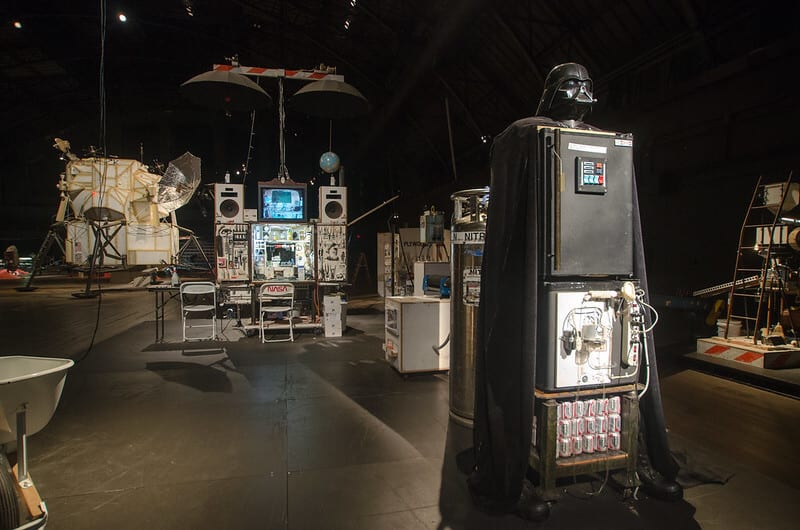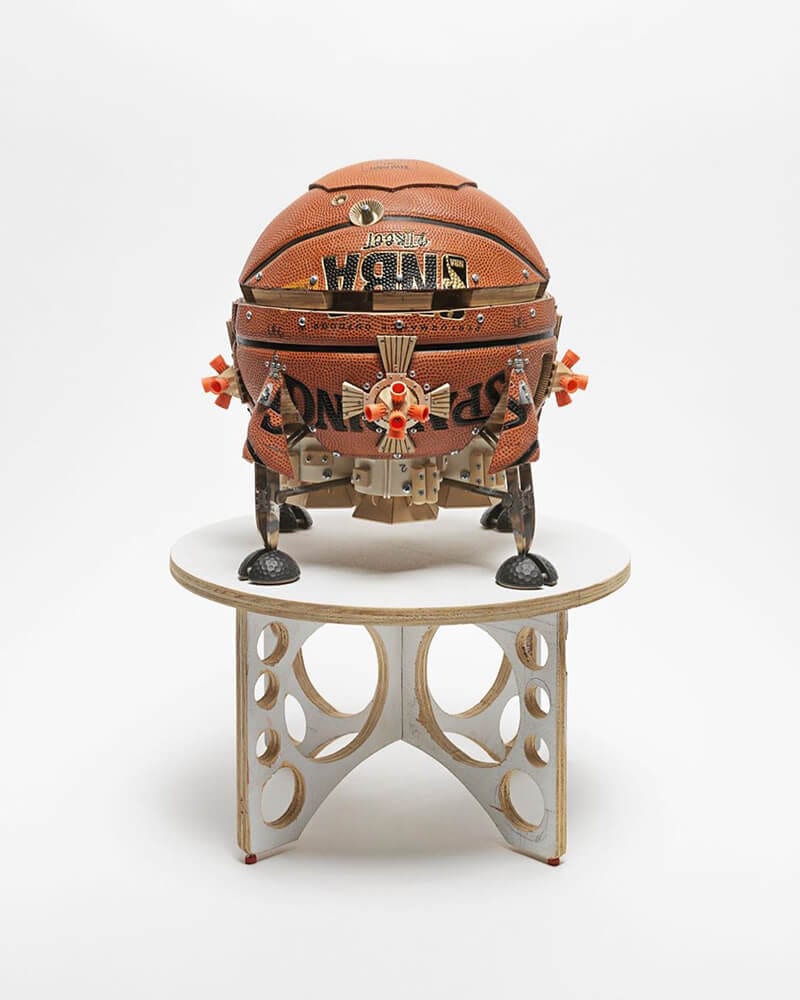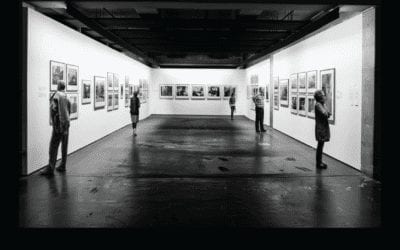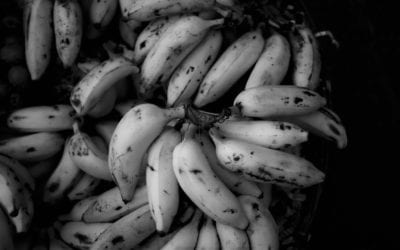The Psychology of Interpretation

Space Program: Mars by Tom Sachs – Courtesy of Dave Pinter / CC BY-NC-ND 2.0
Reliving Our Past
Around 1917, psychologist Frederic Bartlett asked a group of participants to read and recite an unusual folk story, The War of the Ghosts (Story). Over time, participants reimagined it to fit their understanding of reality. In the original, a man hears that he was injured in battle. He feels no pain but is sent home. Yet participants claimed, the man asked to return home due to his injury. They subconsciously associated “becoming wounded” with “asking to go home” although it didn’t happen. This experiment laid the foundation for Bartlett’s schema theory. (Bartlett, F.C. 1920 / Bartlett, F.C. 1932)
Schema theory explains how our minds use past experiences to quickly interpret and navigate familiar situations. It does this by connecting pieces of information in a complex web of mental associations called schema. Schemata are made of emotions, smells, people, symbols, behaviors, outcomes, and more. For example, a masked man in a 7-Eleven with a gun is associated with danger and avoidance. Without schemata, we’d stroll inside and stand in line. But schemata are more than our subconscious guides. They’re the bearers of artistic meaning.
“Concept art is when the art itself is actually located in the mind of the viewer not in the object itself.” – Damien Hirst

Aries 1B by Tom Sachs – Courtesy of Thaddaeus Ropac / 17 USC Section 107
Merged Meaning
Every element of our lived reality is stored in schemata. Even “STOP” is associated with a red stop sign. So art merges several schemata together and forces us to interpret them all at one time.
For example, Tom Sachs merges a basketball and space lander in his sculpture Aries 1B. Space landers may allude to exploration or technology. Basketballs may allude to teamwork or America. Exposed screws may allude to scrappy resourcefulness. And its careful craftsmanship may allude to pride. Merging these elements stimulate new thoughts and create artistic meaning.
The meaning is hard to describe.
What do we get when we cross exploration, technology, teamwork, America, and a scrappy attitude? It’s hard to say. We’ve never had to interpret it. This often leaves us buzzing with thoughts yet surprisingly speechless.
Everyone sees something different.
We all have unique life experiences and schemata. To some, clowns are happy & fun. For others, they’re terrifying sewer creatures. Similarly, schemata are different across generations, classes, and cultures. It’s the reason red means passion in the US but purity in India.
The same principle applies to art. Aries 1B can have countless meanings based on individual schemata. A sports fanatic may say, “It shows how science has subtly infiltrated and transformed sports.” An anthropologist may reply, “No, it alludes to the expansion of American culture across the globe.”
Artist interpretation isn’t right.
Like us, artists interpret their work through their schemata. Their interpretation allows us to borrow their schemata and see through their eyes. This is useful when something has no associations or meaning to us. For example, a matryoshka will give Americans blank stares. And artist interpretation can bring an enlightening perspective to it. But it isn’t right or wrong.

Chanel Chain Saw by Tom Sachs – Courtesy of Angs School / CC BY-NC-ND 2.0
Intentionally Infinite
Whether viewing fine art or sharing a story, our minds are subtly adding details from a lifetime of experiences. Art understands this. It is intentionally vague to allow for infinite meanings. Meanings that are profound yet indescribable. Meanings that are rooted in the nuances of our lived realities. Art isn’t a book restricted to preordained meaning. It’s a mirror of the mind reflecting thoughts we always had.
As I can,
ss
How We Meet Black America
How We Meet Black AmericaRumors of War by Kehinde Wiley - Courtesy of Brecht Bug / CC BY-NC-ND 2.0Have we met before?In 2020, nearly everyone has an impression of Black America – good, bad, or indifferent. However, 40% of White Americans don’t have a single friend...
Retail vs. Fine Art: Do We Know the Difference?
Retail vs. Fine Art: Do We Know the Difference?Butterfly Knight by Oliver GalSelling vs. CreatingThe greatest separator between retail and fine art is philosophy. Retail art believes in selling. It’s for the newcomer looking for something beautiful. It wants to be...
Jeff Koons Top 5: $245 Million in Art
Jeff Koons Top 5: $245 Million In Art“What I think is really wonderful about childhood is that kids are really open to everything. Children love things for just what they are. Blue is beautiful for blue. Pink is beautiful for pink.” – Jeff Koons5) Popeye -...
Timeless Design: Reviewing Impulses by Dennis Dodson
Timeless Design: Reviewing Impulses by Dennis DodsonWhen a piece calls you, you know it. In 2016, while venturing through a labyrinth of 2,000+ pieces, one called me. Today, Impulses by Dennis Dodson towers over the rest of my collection. It’s intense yet subtle,...
12 Steps to Appreciating Art
12 Steps to Appreciating ArtUntitled No. 11, 1963 by Mark Rothko – Image Courtesy of Flickr / CC BY-NC-ND 2.0The Power of OpinionThe key to balancing subjectivity and judgment is our opinion. Opinions are interesting. They are unique to each of us yet we always have a...
Why No One Understands Abstract Art
Why No One Understands Abstract ArtSvanen (The Swan) No. 17 by Hilma Af Klint - Licensing (PD-old-75)Lost In the AbstractThe wilderness of abstract art is strange. Its colorful branches are incredibly unique yet strikingly similar – leaving us lost in the abstract....
Why A Banana is Worth $120K
Why a Banana is Worth $120KWhat’s special about Comedian?The banana’s name is Comedian. Don’t think of Comedian as a banana. Think about it as a comedian at a Sunday open mic. Every joke is about wealth inequality. And we’re all a part of it. Cattelan knew the...






